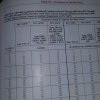Hello Again all,
I'm the crazy guy wiring up a tank. With all of your help I got the radio working. Thanks!
Next, I need to wire the tank up with cable. I was wondering if I could use home 12/2 wire or 14/2 but I'm not sure how to calculate the rating. One alternator will put out 12v, the other will put out 24v. Not sure on the amperage but the 24v will run the radio, which pulls about one-two amps, and then the elevation gun which pulls 20. The alternator may put out up to 80 amps but only 24v. What is the math here?
The idea was to use the 12/2 yellow home wire for the 24v system and the 14/2 white wire for the 12v.
Thoughts?
Thanks!
Jeff
I'm the crazy guy wiring up a tank. With all of your help I got the radio working. Thanks!
Next, I need to wire the tank up with cable. I was wondering if I could use home 12/2 wire or 14/2 but I'm not sure how to calculate the rating. One alternator will put out 12v, the other will put out 24v. Not sure on the amperage but the 24v will run the radio, which pulls about one-two amps, and then the elevation gun which pulls 20. The alternator may put out up to 80 amps but only 24v. What is the math here?
The idea was to use the 12/2 yellow home wire for the 24v system and the 14/2 white wire for the 12v.
Thoughts?
Thanks!
Jeff

